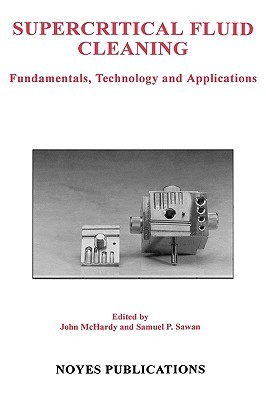
- We will send in 10–14 business days.
- Publisher: William Andrew
- ISBN-10: 0815514166
- ISBN-13: 9780815514169
- Format: 16.6 x 24.3 x 2.5 cm, kieti viršeliai
- Language: English
- SAVE -10% with code: EXTRA
Supercritical Fluid Cleaning (e-book) (used book) | bookbook.eu
Reviews
Description
Although supercritial fluid (SCF) technology is now widely used in extraction and purification processes (in the petrochemical, food and pharmaceuticals industries), this book is the first to address the new application of cleaning. The objective is to provide a roadmap for readers who want to know whether SCF technology can meet their own processing and cleaning needs. It is particularly helpful to those striving to balance the requirements for a clean product and a clean environment. The interdisciplinary subject matter will appeal to scientists and engineers in all specialties ranging from materials and polymer sciences to chemistry and physics. It is also useful to those developing new processes for other applications, and references given at the end of each chapter provide links to the wider body of SCF literature.
The book is organized with topics progressing from the fundamental nature of the supercritical state, through process conditions and materials interactions, to economic considerations. Practical examples are included to show how the technology has been successfully applied. The first four chapters consider principles governing SCF processing, detailing issues such as solubility, design for cleanability, and the dynamics of particle removal. The next three chapters discuss surfactants and microemulsions, SCF interaction with polymers, and the use of supercritical carbon dioxide (CO2) as a cleaning solvent. The closing chapters focus on more practical considerations such as scaleup, equipment costs, and financial analysis.EXTRA 10 % discount with code: EXTRA
The promotion ends in 22d.21:55:18
The discount code is valid when purchasing from 10 €. Discounts do not stack.
- Publisher: William Andrew
- ISBN-10: 0815514166
- ISBN-13: 9780815514169
- Format: 16.6 x 24.3 x 2.5 cm, kieti viršeliai
- Language: English English
Although supercritial fluid (SCF) technology is now widely used in extraction and purification processes (in the petrochemical, food and pharmaceuticals industries), this book is the first to address the new application of cleaning. The objective is to provide a roadmap for readers who want to know whether SCF technology can meet their own processing and cleaning needs. It is particularly helpful to those striving to balance the requirements for a clean product and a clean environment. The interdisciplinary subject matter will appeal to scientists and engineers in all specialties ranging from materials and polymer sciences to chemistry and physics. It is also useful to those developing new processes for other applications, and references given at the end of each chapter provide links to the wider body of SCF literature.
The book is organized with topics progressing from the fundamental nature of the supercritical state, through process conditions and materials interactions, to economic considerations. Practical examples are included to show how the technology has been successfully applied. The first four chapters consider principles governing SCF processing, detailing issues such as solubility, design for cleanability, and the dynamics of particle removal. The next three chapters discuss surfactants and microemulsions, SCF interaction with polymers, and the use of supercritical carbon dioxide (CO2) as a cleaning solvent. The closing chapters focus on more practical considerations such as scaleup, equipment costs, and financial analysis.

Reviews